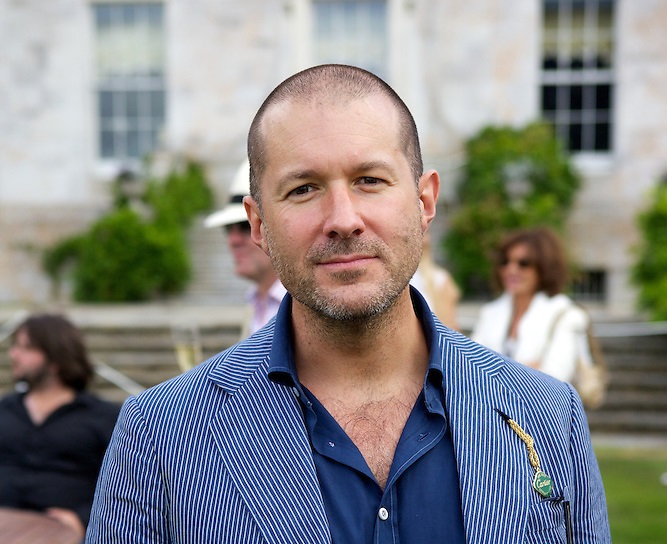It’s the golden rule of business, put the customer at the core of everything you do. It’s the linchpin of digital transformation — put the customer at the core. It’s the key message of data too. But there is another point of view. As the lesson of Jonathan Ive, who is leaving Apple and Steve Jobs suggests: don’t always treat the views of customers as sacrosanct.
It’s an idea that takes us to innovators dilemma, the theory developed by Harvard Professor, Clayton Christensen to explain how market leading companies fall off their perch. In his classic study, he focused on the disc drive industry, and what happened as disc drives changed from 12 inch, to 8 inch to 5.5 inch to 3.25 inch. On every occasion, every leading player in the business, except IBM, went from market leader to minnow, if indeed they survived at all. The companies did all the things the text books said. They spoke to customers, they followed the market research. Their customers said ‘ignore these new disc drives, they are little more than toys.’ Often the engineers at the companies in question wanted to move into this new market, but the marketing people said ‘no’.
The problem is that sometimes customers don’t know what they really want.
In the case of the innovators dilemma example, the companies in question were B2B. One of the lessons of innovators dilemma is ‘listen to your customers’ customers.’
Cannibalise or be eaten, how to become a disruptor
But at Apple, Steve Jobs and Jonathan Ive were targeting the end user. In the case of the iPod, iPhone or iPad, the customer was at the end of the chain.
Famously, the two of them spent months poring over the tiny details in design. At one point, Jobs and Ive nearly shelved the iPhone. When speaking at the British Embassy, Jonathan Ive conceded that there were multiple times when they nearly dropped the project, for example: “Where I put the phone to my ear and my ear dials the number accidentally.”
Truth is, producing a touch screen phone was something the customers said they didn’t want.
But they said they didn’t want it because they didn’t understand the potential applications that would emerge as wireless internet access became faster from having a phone with a screen taking up the entire front.
Indeed, Steve Jobs once said: “It’s not the consumers’ job to figure out what they want.”
The former Apple marketing executive, Guy Kawasaki, says: “Customers cannot tell you what they need. Apple market research is an oxymoron. The Apple focus group was the right hemisphere of Steve’s brain talking to the left one. If you ask customers what they want, they will tell you: ‘Better, faster, and cheaper’ —that is, better sameness, not revolutionary change. They can only describe their desires in terms of what they are already using —around the time of the introduction of Macintosh, all people said they wanted was better, faster, and cheaper MS-DOS machines. The richest vein for tech startups is creating the product that you want to use—that’s what (Apple founders) Steve and Woz (Steve Jobs and Steve Wozniak) did.”
Jeff Bezos has a similar view, he may be famous for customer obsession, but when talking about the Amazon Echo he once said: “No customer was asking for Echo. Market research doesn’t help. If you had gone to a customer in 2013 and said, ‘Would you like a black, always-on cylinder in your kitchen about the size of a Pringles can that you can talk to and ask questions, that also turns on your lights and plays music?’ I guarantee you they’d have looked at you strangely and said, ‘No, thank you.'”
Apple and Facebook fall by the wayside as the cloud giants vie for the accolade: the world’s biggest company
Whilst analysts pour over the latest results from Apple and Facebook; they miss the big trend: Microsoft and Amazon now vie for the title: world’s biggest company. And Alphabet isn’t far behind. There is something this ‘big three’ have in common: it is called the ‘cloud’.
The trouble with this approach is that you can’t subject it to a mathematical formulae, to procedures and processes. The right hemisphere of Steve Job’s brain, or Jonathan Ive’s brain is not the kind of thing data scientists can study.
But what innovators dilemma did find is that the engineers and techies often had a better handle of what was going to be big.
From identifying the rise of the internet to the need for voice recognition technology, they were ahead of the game.
Although Apple doesn’t always get design right, it’s market cap of around a trillion dollars is sufficient evidence to suggest that it got it right when it mattered.
How will Apple manage with Jonathan Ive as a consultant— providing design expertise but from outside the company?
The question is, will Apple dare ignore market research with future products?
Jeff Bezos, on the other hand, seems more than willing to do that.







